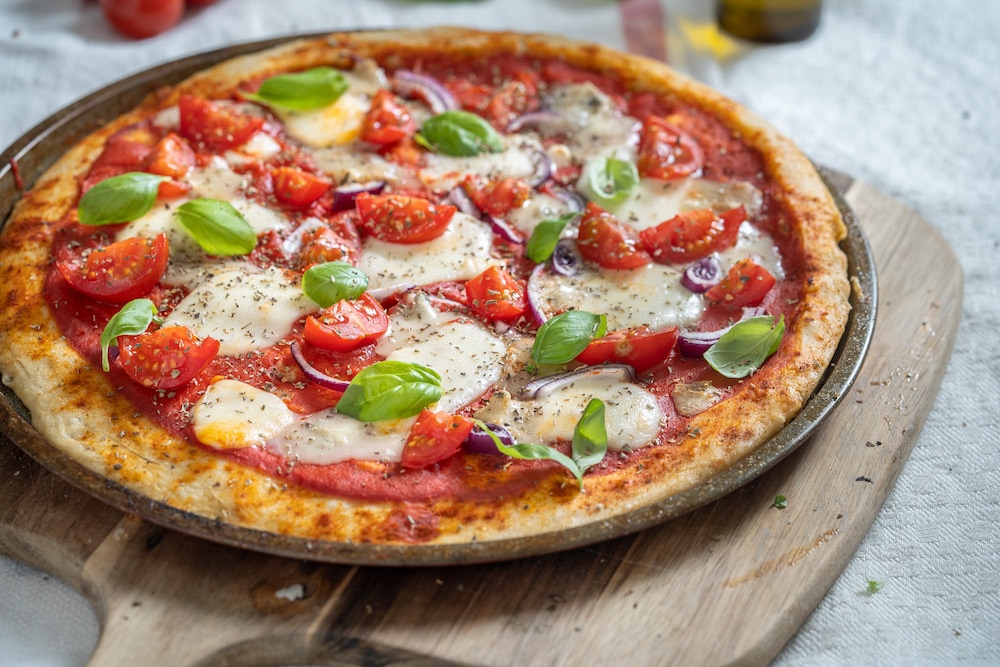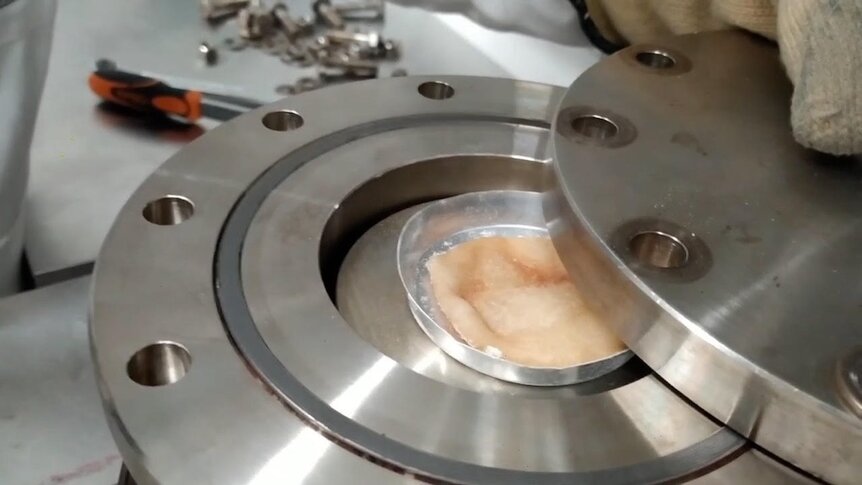Create a free profile to get unlimited access to exclusive videos, sweepstakes, and more!
Cowabunga! The future of pizza crust could be “carbonated”
A new method for making pizza crust is on the rise.

There are few scientific disciplines which seem further from one another than food science and plastic polymer creation, but it turns out they can behave in pretty similar ways. Perhaps no one knows that better than Ernesto Di Maio, a researcher from the Foam lab at the University of Naples Federico.
Previously, Di Maio worked with the Italian branch of Dow Chemical to develop a new process for synthesizing polyurethane polymers using pressure. Later, he started wondering if a similar process might be used for the creation of edible polymers like those found in various doughs or batters.
In partnership with colleagues from the Department of Chemical Engineering at the University of Naples Federico, they set about creating pizza crusts without the use of yeast for leavening. The results of their research were published in the journal Physics of Fluids.
Traditionally, doughs incorporate yeast into the mix to produce a leavening effect. The yeast, which is a living organism, feeds on sugars in the dough and produces carbon dioxide which infuses the mixture with gases, causing it to rise. It’s a time-tested method but there are reasons we might want to find alternatives.
“There are potential allergies which yeast produces, and there are the logistics of leavening,” Di Maio told SYFY WIRE. “Yeast leavening takes time. For a pizzeria that can constrain the amount of pizza they can sell in a day. If they produce 300 pizza doughs in the morning, that’s all they can make. If they can do it with yeast-free leavening, some of these problems can be reduced.”
To make their dough, the team mixed flour, water, and salt, and placed the mixture into an autoclave which acts as a pressurized oven. The oven is pre-heated to the cooking temperature of the dough, so it starts cooking as soon as it’s placed inside. Then the oven is pressurized using ambient air, carbon dioxide, helium, or any other food-safe gas you might want. The process is similar to how soda is carbonated, using pressure to infuse gases into the mixture.
“It’s combined leavening and baking. The dough cooks slowly enough that you have time to release the pressure in a controlled way so as to gently inflate the dough to the desired extent. Gently releasing the pressure is key,” Di Maio said.
For the first test, the team made very small pizza crusts, only about a centimeter in diameter. This first test allowed them to observe the way the yeast-free dough reacts in the autoclave in comparison to conventional yeast-leavened dough. They found that the density and morphology of the dough was similar to what you’d expect from a pizzeria.
“The size, shape, and number of bubbles dictate the properties of the dough, and they were pretty identical,” Di Maio said.
They also did a second round of experiments creating crusts approximately six centimeters in diameter, but you’d need a dozen or so for those to make a good snack. Next, the team is buying a larger pressurized oven to make larger pizzas in the hopes of settling the question of whether their yeast-free dough really works as an alternative at ordinary scales.
Researchers chose pizza dough as their proof of concept, but the process should work for any dough or batter.
“We are from Naples so pizza is one of our first thoughts, but we believe this can be truly generalized for all leavening products like cakes and breads,” Di Maio said.
If all goes well, the Ninja Turtles will have a new way to make pizza in the sewers. There’s certainly an abundance of gas to choose from and it’s probably best to avoid any yeast you find down there.



























